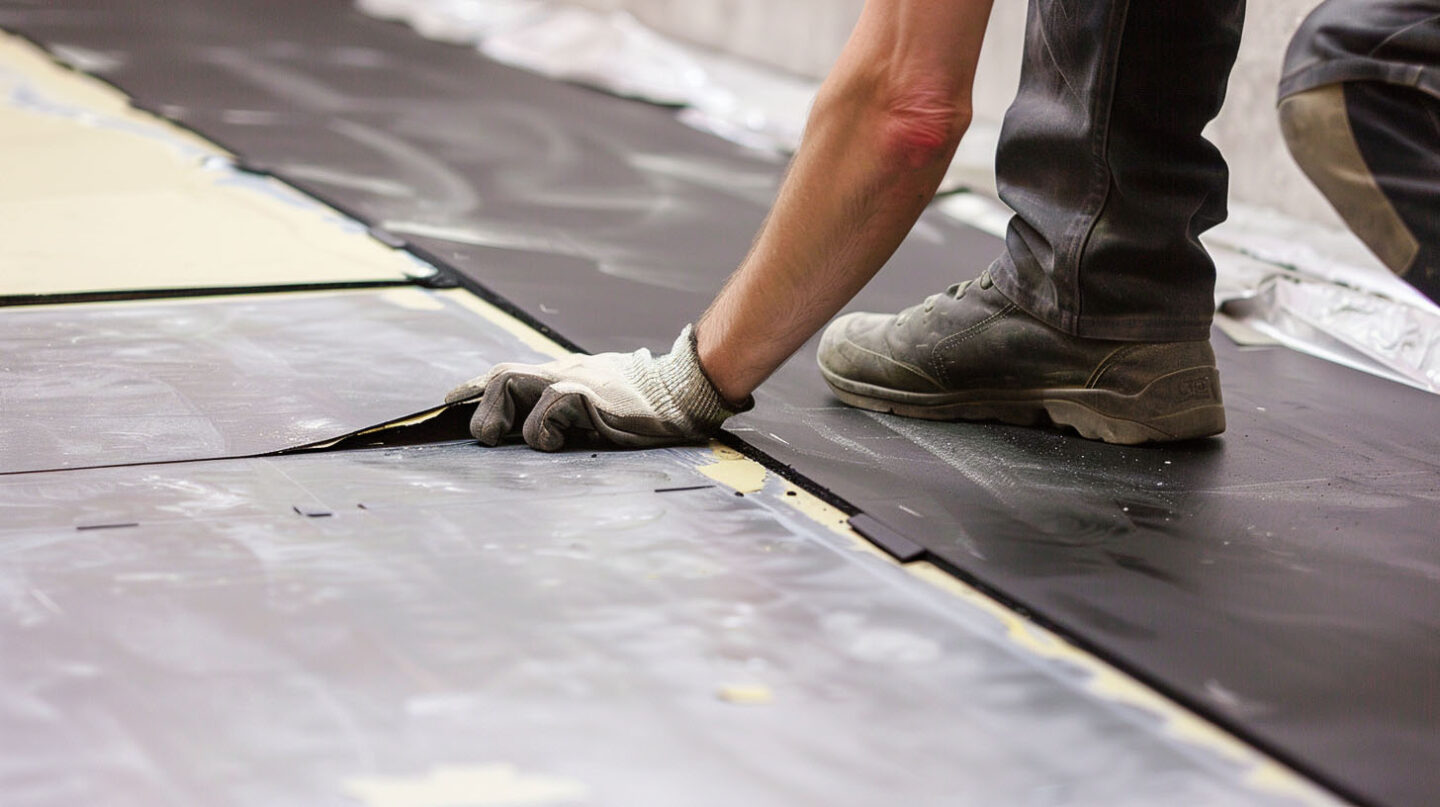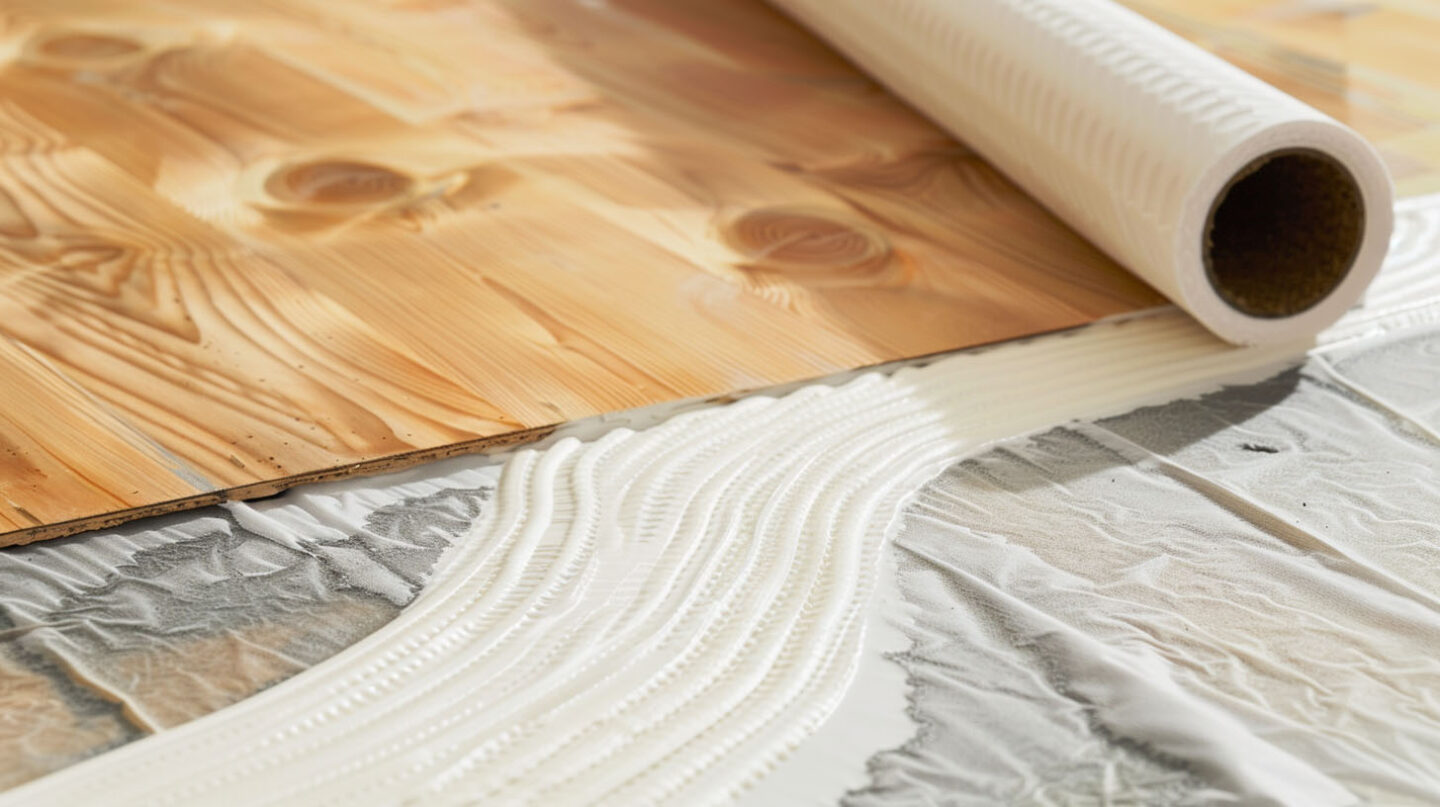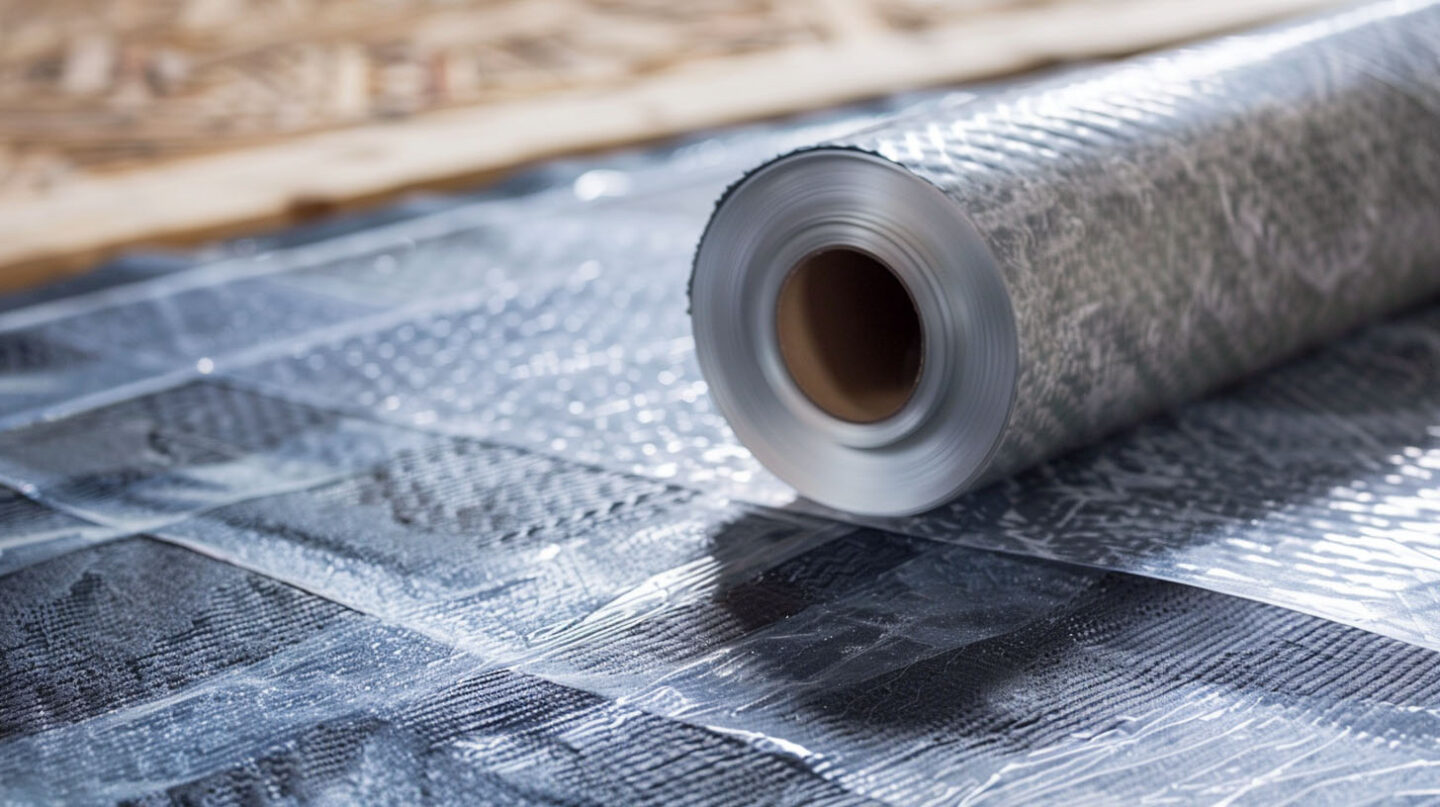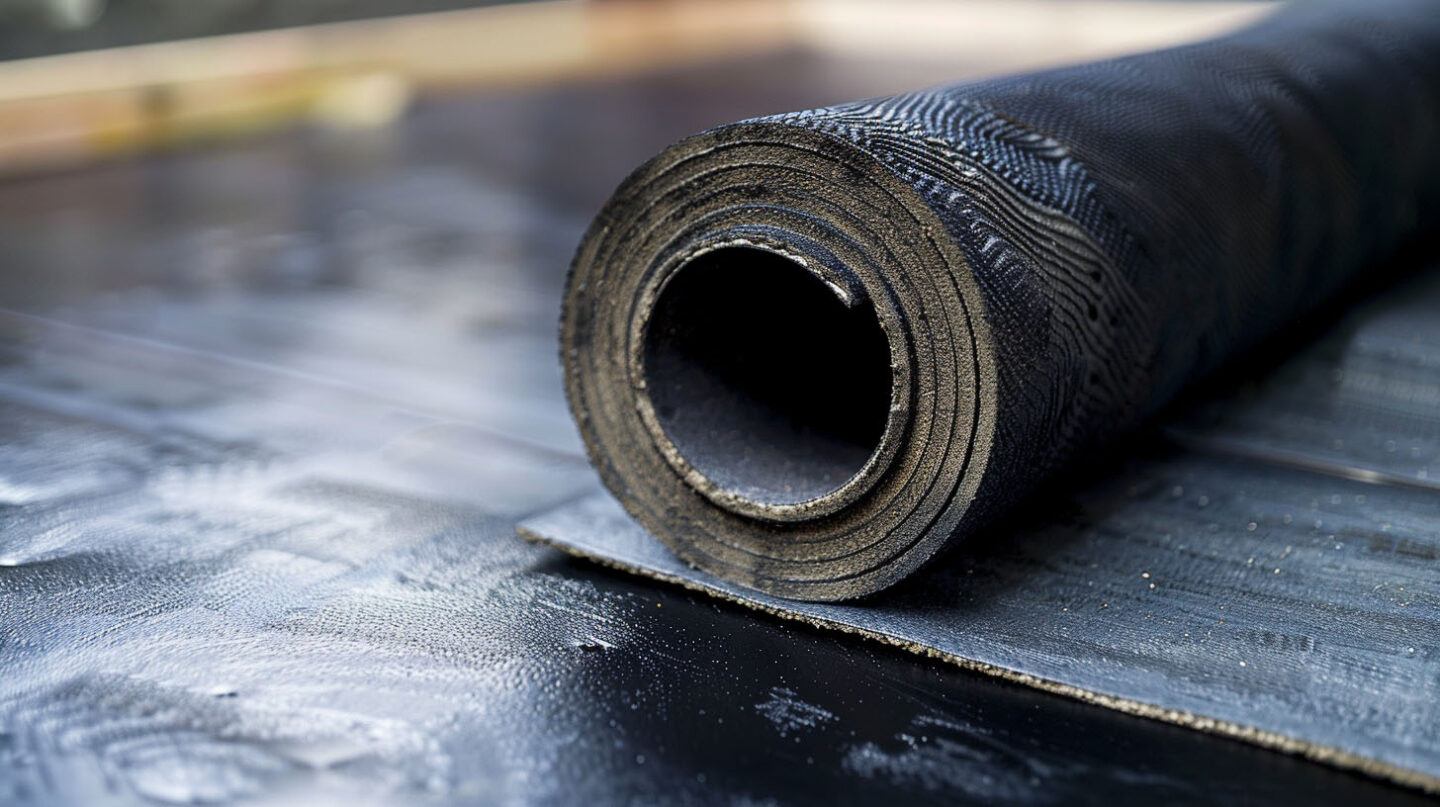Your roof is more than just shingles; it’s a complete roofing system designed to protect your home. A crucial, yet often overlooked, component of this system is the roofing underlayment. This layer sits between your shingles and the wooden roof deck, acting as a vital secondary barrier against the elements. Choosing the right underlayment is essential for the long-term health of your roof. At The Shingle Master, we believe in empowering you with knowledge to make the best decisions for your Durham, NC home.
Understanding Self-Adhered Roofing Underlayments
A self-adhered roofing underlayment is a highly specialized membrane designed to enhance roof protection against water intrusion while providing a smooth surface for roofing material installation. This innovative product often utilizes a strong adhesive for exceptional adhesion, effectively sealing roof penetrations and eaves to prevent leaks. With unique characteristics, such as ice dam protection and high wind resistance, underlayment manufacturers produce various synthetic options that cater to specific building codes, ensuring long-lasting performance in challenging weather zones.
What Sets Self-Adhered Underlayments Apart
Unique characteristics distinguish self-adhered underlayments from traditional options. These products feature an adhesive backing that allows for an effortless installation, significantly reducing labor time for roofing contractors. Engineered to create a robust waterproof barrier, they mitigate risks related to water intrusion and ice dams, especially in regions prone to heavy rains or high winds. The adhesion properties ensure a secure fit over the entire roof deck, promoting superior durability and performance compared to conventional felt or synthetic underlayment solutions.

How They Work: The Science Behind the Stick
Adhesion plays a crucial role in the functionality of self-adhered underlayments. These systems utilize a high-performance adhesive, allowing the underlayment membrane to bond directly to the roof deck, creating a seamless waterproof barrier. This method eliminates the need for fasteners, minimizing potential leak points and enhancing the overall durability of the roofing system. With a focus on moisture management, these products effectively manage water intrusion while providing ice dam protection, ensuring optimal performance even in the most challenging weather conditions.
Comparing Traditional vs. Self-Adhered Underlayments
When deciding on a roof underlayment, you’ll typically choose between traditional underlayment, like asphalt-saturated felt, and modern self-adhered options. Traditional materials have been used for decades, but new technology has introduced products with significant performance advantages, especially against wind uplift.
Understanding the differences in how these materials are made, installed, and how they perform over time is key. Manufacturer installation instructions vary greatly between the two, and the long-term results can be just as different.
Key Differences in Materials and Installation
Materials and installation methods play a crucial role in differentiating self-adhered underlayments from traditional options. While asphalt-based products utilize a sticky backing for seamless application, synthetic underlayments offer enhanced durability and moisture resistance. Installation instructions for self-adhered systems prioritize a smooth surface for optimal adhesion, often eliminating the need for fasteners or additional sealants. This not only simplifies the installation process but also enhances the overall waterproof barrier, providing a protective layer against water intrusion, particularly in challenging climates.
Performance Expectations Over Time
The longevity and effectiveness of self-adhered underlayments significantly depend on their quality and installation practices. Synthetic underlayment options generally provide superior durability, ensuring a protective layer against weather elements such as heavy rains and high winds. Over time, these membranes maintain strong adhesion and resistance to moisture, preventing water intrusion and leaks. Homeowners should consider factors like local building codes and specific roofing materials to ensure that the underlayment continues to perform optimally throughout its lifespan.
Types of Self-Adhered Roofing Underlayments
Not all self-adhered underlayment products are created equal. The market offers a few different types, primarily categorized by their core materials. The main options are asphalt-based (often called “peel-and-stick”) and fully synthetic underlayments.
Each type of underlayment membrane has its own set of characteristics related to thickness, durability, and cost. Understanding these differences will help you and your roofing contractor choose the best fit for your specific needs and budget. Let’s examine the two main categories.

Asphalt-Based Peel-and-Stick Products
Versatile in application, asphalt-based peel-and-stick products serve as an efficient waterproof barrier within roofing systems. Designed with a self-adhesive backing, these underlayment membranes facilitate ease of installation, minimizing the need for additional fasteners. Their durability is complemented by robust adhesion, ensuring a strong bond to the entire roof deck. These materials excel in high-wind areas, offering increased wind resistance and helping homeowners manage unique challenges such as water intrusion and ice dam protection effectively.
Synthetic Self-Adhered Underlayments
Synthetic self-adhered underlayments have gained popularity due to their advanced design and superior performance. These underlayments utilize a high-quality membrane that offers an effective waterproof barrier and exceptional resistance to moisture. With enhanced adhesion, they ensure a smooth surface for roofing materials, minimizing the risk of leaks through seams and roof penetrations. Moreover, their lightweight nature aids in easier installation, making them a preferred choice for roofing contractors, especially in steep slope applications and regions with heavy rains or high winds.
Situations Where Self-Adhered Underlayments Make Sense
While self-adhered underlayments offer fantastic benefits, they are not always necessary for every square foot of every roof. They make the most sense in situations that present unique challenges or require a higher level of protection. Certain areas of a roof naturally demand special attention to prevent leaks.
Knowing when to invest in this premium protection can save you from costly repairs down the road. For homeowners in Durham facing harsh weather, or for those with specific roof designs, self-adhered products are an intelligent choice. Let’s explore a couple of scenarios where they are highly recommended.
Steep Slope Roof Applications
Self-adhered underlayments are particularly beneficial for steep slope roof applications due to their excellent adhesion properties. This enables a watertight seal that effectively combats water intrusion and the risk of ice dam formation, critical in heavy rains and snow-prone areas. The ease of installation minimizes the need for fasteners, reducing potential roof penetrations that could compromise the roofing system’s integrity. Given their robust wind resistance, these underlayments provide an unparalleled protective layer, ensuring durability over a long time in challenging conditions.
Challenging Weather Zones and Wind Uplift
Certain climates demand exceptional performance from roofing materials due to heavy rains and high winds. Self-adhered underlayments offer an advanced waterproof barrier, enhancing wind resistance significantly. The adhesive properties ensure that the underlayment membrane securely bonds to the roof deck, reducing potential leaks caused by wind uplift. In challenging weather zones, these products also provide a protective layer against water intrusion, making them a reliable choice. Homeowners in such areas benefit from the durability and reliability these systems offer, ensuring long-term protection.

What’s Next
Selecting the right roofing underlayment is pivotal for enhancing the overall durability and protection of the roofing system. Self-adhered underlayments offer seamless installation and impressive resistance against water intrusion, making them a solid choice for various applications, particularly in challenging weather zones. Homeowners and roofing contractors alike appreciate the balance of ease of installation and robust performance, ensuring that both aesthetics and functionality are prioritized. With our accolades as a GAF Master Elite Contractor, BBB A+, Haag Certified Inspector, NC Licensed General Contractor, and recognition as Raleigh’s Best Roofing Contractor by NHBA and the Raleigh Chamber of Commerce, choosing the best underlayment can significantly extend the lifespan of your roof, providing unparalleled peace of mind.
Frequently Asked Questions
What is self-adhered underlayment?
A self-adhered underlayment is a waterproof membrane with a powerful adhesive backing. During installation, you peel off a protective liner and the underlayment sticks directly to the roof deck. This creates a continuous, watertight seal without the need for nails or staples, offering superior protection against leaks.
What are the three types of roofing underlayment?
The three main types of roofing underlayment are asphalt-saturated felt, non-adhered synthetic underlayment, and self-adhered “peel-and-stick” underlayment. Felt is the traditional option, while synthetic and peel-and-stick products offer enhanced durability and water resistance for the roof deck, representing more modern roofing technologies.
Is peel and stick roof underlayment worth it?
Yes, for many situations, peel and stick roof underlayment is absolutely worth it. This asphalt-based membrane provides exceptional waterproofing, durability, and easier installation compared to traditional felt. The added cost is justified by the superior protection against leaks, especially in areas prone to ice dams or high winds.
Read our blog: Infrared Moisture Scans: Finding Hidden Leaks—Pros & Cons


